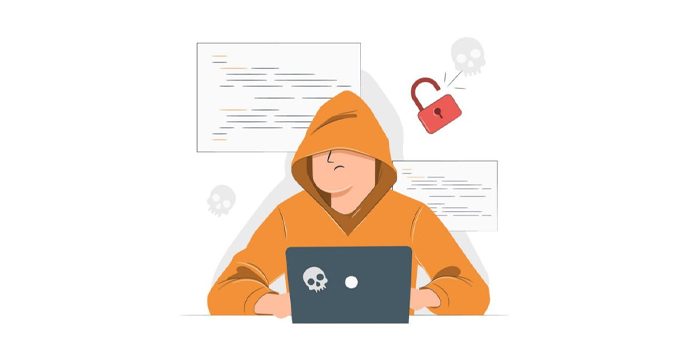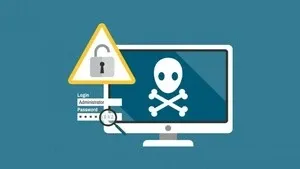This plan includes
- Limited free courses access
- Play & Pause Course Videos
- Video Recorded Lectures
- Learn on Mobile/PC/Tablet
- Quizzes and Real Projects
- Lifetime Course Certificate
- Email & Chat Support
What you'll learn?
- Ethical hacking.
- Kali Linux.
- Python programming.
- Network security.
- Penetration testing.
Course Overview
If you would like to learn ethical hacking in 2023, you are going to LOVE this course! Learn ethical hacking, penetration testing, Kali Linux and Python hacking with over 28 hours of HD video tutorials! We will cover the following topics:
-
How to setup a Kali Linux system
-
Essential Linux system commands
-
How to create a secure penetration testing environment
-
Footprinting
-
Scanning
-
Website penetration testing
-
WPA2 wireless network cracking
-
Man in the middle attacks
-
System hacking
-
Python programming fundamentals
-
Writing our own pen-testing tools (reverse shell, keylogger and bruteforcer)
-
Tips for building a career in cyber security
This course was designed for absolute beginners, so no previous ethical hacking or programming knowledge is necessary. English subtitles are available and all lectures are downloadable for offline viewing. 1 on 1 assistance with the tutorials is available within the discussion forum.
Still not sold? Check out some of these great reviews!
"Great course, beginner friendly. And most importantly, great instructor and great community."
"It's really detailed and helps you get started well!"
"Thank you for all the changes and all the new stuff you keep adding. I have more than a few ethical hacking courses and this is the best one, at least so far. I had my doubts when I got it due to it being so short but I am really happy that I did. Great job, keep it up!"
Thank you for taking the time to read this and we hope to see you in the course!
Pre-requisites
- A working computer.
- Internet access.
- Kali Linux (free).
Target Audience
- Students who are interested in ethical hacking and network security.
Curriculum 148 Lectures 28:44:12
Section 1 : Introduction and Installation
- Lecture 2 :
- Kali Linux installation
- Lecture 3 :
- Enabling full-screen
- Lecture 4 :
- Introduction to the course
Section 2 : Basic Linux Commands
- Lecture 1 :
- Basic commands part 1
- Lecture 2 :
- Basic commands part 2
- Lecture 3 :
- Basic commands part 3
Section 3 : Creating a Secure Hacking Environment
- Lecture 1 :
- Changing IP address and wireless adapter setup
- Lecture 2 :
- Creating a bootable Kali USB drive
- Lecture 3 :
- Essential networking terms
- Lecture 4 :
- Essential hacking terms
- Lecture 5 :
- Additional Kali tools to install
- Lecture 6 :
- Changing our MAC address with macchanger
Section 4 : Footprinting
- Lecture 1 :
- Google hacking
- Lecture 2 :
- Nikto basics
- Lecture 3 :
- Whois tool
- Lecture 4 :
- Email harvesting
- Lecture 5 :
- Shodan
- Lecture 6 :
- Zone transfer with Dig
Section 5 : Scanning
- Lecture 1 :
- Installing Metasploitable
- Lecture 2 :
- Nmap part 1
- Lecture 3 :
- Nmap part 2
- Lecture 4 :
- Nmap part 3
- Lecture 5 :
- Zenmap
- Lecture 6 :
- TCP scans
- Lecture 7 :
- Nmap bypassing defenses
- Lecture 8 :
- Nmap scripts part 1
- Lecture 9 :
- Nmap scripts part 2
Section 6 : Website Penetration Testing
- Lecture 1 :
- Installing OWASP
- Lecture 2 :
- HTTP request
- Lecture 3 :
- HTTP response
- Lecture 4 :
- Burpsuite configuration
- Lecture 5 :
- Editing packets in Burpsuite
- Lecture 6 :
- Whatweb and Dirb
- Lecture 7 :
- Password recovery attack
- Lecture 8 :
- Burpsuite login bruteforce
- Lecture 9 :
- Hydra login bruteforce
- Lecture 10 :
- Session fixation
- Lecture 11 :
- Injection attacks
- Lecture 12 :
- Simple command injection
- Lecture 13 :
- Exploiting command injection vulnerability
- Lecture 14 :
- Finding blind command injection
- Lecture 15 :
- SQL basics
- Lecture 16 :
- Manual SQL injection part 1
- Lecture 17 :
- Manual SQL injection part 2
- Lecture 18 :
- SQLmap basics
- Lecture 19 :
- XML injection
- Lecture 20 :
- Installing XCAT and preventing injection attacks
- Lecture 21 :
- Reflected XSS
- Lecture 22 :
- Stored XSS
- Lecture 23 :
- Changing HTML code with XSS
- Lecture 24 :
- XSSer and XSSsniper
Section 7 : Wireless Cracking
- Lecture 1 :
- Wireless attacking theory
- Lecture 2 :
- Enabling monitor mode
- Lecture 3 :
- Capturing handshake with airodump
- Lecture 4 :
- RockYou.txt
- Lecture 5 :
- Cracking with Aircrack
- Lecture 6 :
- Cracking with Hashcat
- Lecture 7 :
- Creating password lists with Crunch
- Lecture 8 :
- Creating password lists with Cupp
- Lecture 9 :
- Rainbow tables part 1
- Lecture 10 :
- Rainbow tables part 2
- Lecture 11 :
- Installing Fluxion
- Lecture 12 :
- Finding and cracking hidden networks
- Lecture 13 :
- Preventing wireless attacks
Section 8 : Man in the Middle Attacks
- Lecture 1 :
- ARP protocol basics
- Lecture 2 :
- Man in the middle attack theory
- Lecture 3 :
- Installing MITMf
- Lecture 4 :
- Manual ARP spoofing
- Lecture 5 :
- Problems while installing MITMf
- Lecture 6 :
- HTTP traffic sniffing
- Lecture 7 :
- DNS spoofing and HTTPS password sniffing
- Lecture 8 :
- Hooking browsers with BEEF
- Lecture 9 :
- Screenshotting targets browser
- Lecture 10 :
- Cloning any webpage
- Lecture 11 :
- Ettercap basics
Section 9 : System Hacking
- Lecture 1 :
- MSFconsole environment
- Lecture 2 :
- Metasploit modules explained
- Lecture 3 :
- Bruteforcing SSH with Metasploit
- Lecture 4 :
- Attacking Tomcat with Metasploit
- Lecture 5 :
- Getting Meterpreter with command injection
- Lecture 6 :
- PHP code injection
- Lecture 7 :
- 2 Metasploitable exploits
- Lecture 8 :
- Wine installation
- Lecture 9 :
- Creating Windows payloads with Msfvenom
- Lecture 10 :
- Encoders and Hex editor
- Lecture 11 :
- Windows 10 Meterpreter shell
- Lecture 12 :
- Meterpreter environment
- Lecture 13 :
- Windows 10 privilege escalation
- Lecture 14 :
- Preventing privilege escalation
- Lecture 15 :
- Post exploitation modules
- Lecture 16 :
- Getting Meterpreter over Internet with port forwarding
- Lecture 17 :
- Eternalblue exploit
- Lecture 18 :
- Persistence module
- Lecture 19 :
- Hacking over the internet with Ngrok
- Lecture 20 :
- Android device attack with Venom
- Lecture 21 :
- The real hacking begins now!
Section 10 : Python Crash Course
- Lecture 1 :
- Variables
- Lecture 2 :
- Raw input
- Lecture 3 :
- If-else statements
- Lecture 4 :
- For loops
- Lecture 5 :
- While loops
- Lecture 6 :
- Python lists
- Lecture 7 :
- Functions
- Lecture 8 :
- Classes
- Lecture 9 :
- Importing libraries
- Lecture 10 :
- Files in Python
- Lecture 11 :
- Try and except rule
Section 11 : Coding an Advanced Backdoor
- Lecture 1 :
- Theory behind reverse shells
- Lecture 2 :
- Simple server code
- Lecture 3 :
- Connection with reverse shell
- Lecture 4 :
- Sending and receiving messages
- Lecture 5 :
- Sending messages with while true loop
- Lecture 6 :
- Executing commands on target system
- Lecture 7 :
- Fixing backdoor bugs and adding functions
- Lecture 8 :
- First test using our backdoor
- Lecture 9 :
- Trying to connect every 20 seconds
- Lecture 10 :
- Creating persistence part 1
- Lecture 11 :
- Creating persistence part 2
- Lecture 12 :
- Changing directory
- Lecture 13 :
- Uploading and downloading files
- Lecture 14 :
- Downloading files from the internet
- Lecture 15 :
- Starting programs using our backdoor
- Lecture 16 :
- Capturing screenshot on the target PC
- Lecture 17 :
- Embedding backdoor in an image part 1
- Lecture 18 :
- Embedding backdoor in an image part 2
- Lecture 19 :
- Checking for administrator privileges
- Lecture 20 :
- Adding help option
Section 12 : Creating a Keylogger for the Backdoor
- Lecture 1 :
- Importing Pynput
- Lecture 2 :
- Simple keylogger
- Lecture 3 :
- Adding report function
- Lecture 4 :
- Writing keystrokes to a file
- Lecture 5 :
- Adding the keylogger to our reverse shell part 1
- Lecture 6 :
- Adding the keylogger to our reverse shell part 2
- Lecture 7 :
- Final project test
Section 13 : Basic Authentication Bruteforcer
- Lecture 1 :
- Printing banner
- Lecture 2 :
- Adding available options
- Lecture 3 :
- Starting threads for bruteforce
- Lecture 4 :
- Writing function to run the attack
- Lecture 5 :
- Bruteforcing router login
- Lecture 6 :
- Bypassing antivirus with your future programs
- Lecture 7 :
- Sending malware with spoofed email
Section 14 : BONUS - Building a Career in Cyber Security
- Lecture 1 :
- What will you learn in this section?
- Lecture 2 :
- Why is ethical hacking a valuable skill?
- Lecture 3 :
- What is the best ethical hacking certification?
- Lecture 4 :
- Tips for getting your first job as an ethical hacker
- Lecture 5 :
- How I started my career as an ethical hacker
- Lecture 6 :
- How to price your work
Our learners work at
Frequently Asked Questions
How do i access the course after purchase?
It's simple. When you sign up, you'll immediately have unlimited viewing of thousands of expert courses, paths to guide your learning, tools to measure your skills and hands-on resources like exercise files. There’s no limit on what you can learn and you can cancel at any time.Are these video based online self-learning courses?
Yes. All of the courses comes with online video based lectures created by certified instructors. Instructors have crafted these courses with a blend of high quality interactive videos, lectures, quizzes & real world projects to give you an indepth knowledge about the topic.Can i play & pause the course as per my convenience?
Yes absolutely & thats one of the advantage of self-paced courses. You can anytime pause or resume the course & come back & forth from one lecture to another lecture, play the videos mulitple times & so on.How do i contact the instructor for any doubts or questions?
Most of these courses have general questions & answers already covered within the course lectures. However, if you need any further help from the instructor, you can use the inbuilt Chat with Instructor option to send a message to an instructor & they will reply you within 24 hours. You can ask as many questions as you want.Do i need a pc to access the course or can i do it on mobile & tablet as well?
Brilliant question? Isn't it? You can access the courses on any device like PC, Mobile, Tablet & even on a smart tv. For mobile & a tablet you can download the Learnfly android or an iOS app. If mobile app is not available in your country, you can access the course directly by visting our website, its fully mobile friendly.Do i get any certificate for the courses?
Yes. Once you complete any course on our platform along with provided assessments by the instructor, you will be eligble to get certificate of course completion.
For how long can i access my course on the platform?
You require an active subscription to access courses on our platform. If your subscription is active, you can access any course on our platform with no restrictions.Is there any free trial?
Currently, we do not offer any free trial.Can i cancel anytime?
Yes, you can cancel your subscription at any time. Your subscription will auto-renew until you cancel, but why would you want to?
Instructor

403016 Course Views
6 Courses



 Tech & IT
Tech & IT
 Business
Business
 Coding & Developer
Coding & Developer
 Finance & Accounting
Finance & Accounting
 Academics
Academics
 Office Applications
Office Applications
 Art & Design
Art & Design
 Marketing
Marketing
 Health & Wellness
Health & Wellness
 Sounds & Music
Sounds & Music
 Lifestyle
Lifestyle
 Photography
Photography






















